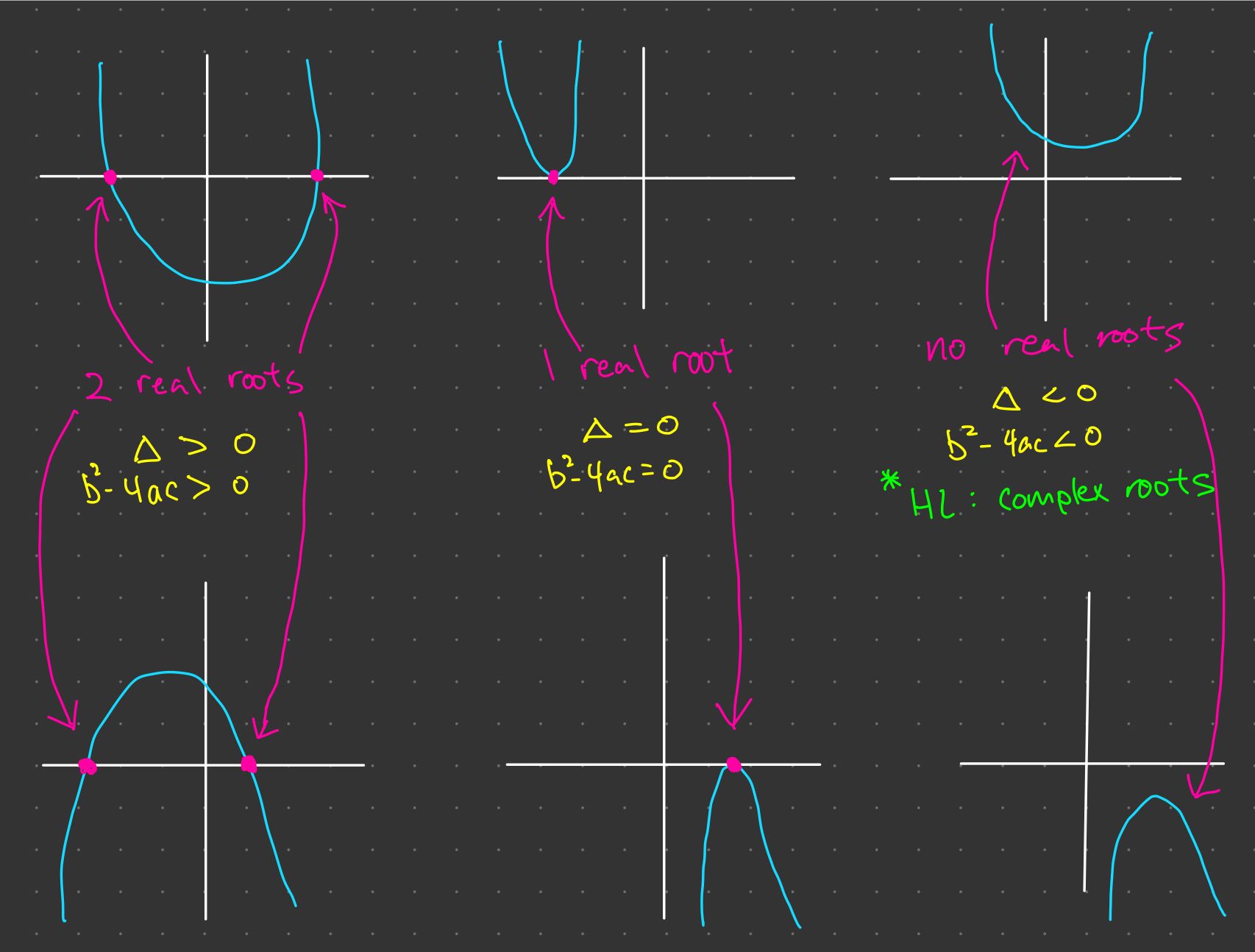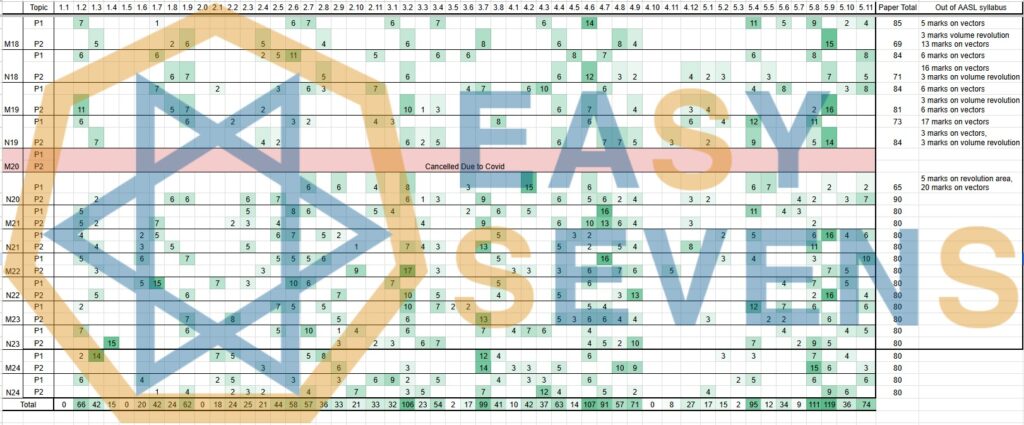Quadratic equations are a fundamental concept in mathematics that plays a crucial role in various fields such as physics, engineering, economics, and computer science. They are of the form ax^2+bx+c=0, where a, b, and c are constants and x is a variable. In IB Math, one of the essential topics is to find the number of roots of a quadratic equation. In this article, we will discuss this topic in detail and provide you with a better understanding of the concept.
Understanding Quadratic Equations
A quadratic equation is a second-degree polynomial equation that can be written in the form ax^2+bx+c=0, where a \neq 0. Here, a, b, and c are constants, and x is the variable. The term ax^2 is called the quadratic term, bx is the linear term, and c is the constant term.
A quadratic equation can have two roots, one root, or no roots at all. The number of roots of a quadratic equation can be determined by calculating the discriminant, which is defined as \Delta=b^2-4ac.
Finding the Discriminant
To determine the number of roots of a quadratic equation, we need to calculate the discriminant. The discriminant is given by \Delta=b^2-4ac. Here, a, b, and c are the coefficients of the quadratic equation.
There are three possible outcomes when we calculate the discriminant:
- If \Delta > 0, then the quadratic equation has two distinct real roots.
- If \Delta = 0, then the quadratic equation has one real root, which is a double root.
- If \Delta < 0, then the quadratic equation has no real roots. Instead, it has two complex conjugate roots.
The table below summarizes the number of roots based on the value of the discriminant:
| Discriminant | Number of Roots |
| \Delta > 0 | Two distinct real roots |
| \Delta = 0 | One real root (double root) |
| \Delta < 0 | No real roots |
Examples
Let’s consider some examples to understand the concept better.
Example 1 – Real Roots (All IB Math Students Need to Know This)
Find the number of roots of the quadratic equation x^2+3x+2=0.
Here, a=1, b=3, and c=2. Therefore, the discriminant is given by:
\Delta=b^2-4ac=3^2-4\times1\times2=1
Since \Delta > 0, the quadratic equation has two distinct real roots. To find the roots, we can use the quadratic formula, which is given by:
x=\frac{-b \pm \sqrt{b^2-4ac}}{2a}
Substituting the values of a, b, c, and \Delta, we get:
x=\frac{-3 \pm \sqrt{1}}{2\times1}
Simplifying, we get:
x_1=-2 and x_2=-1
Therefore, the quadratic equation x^2+3x+2=0 has two distinct real roots, -2 and -1.
Example 2 – Complex Roots (IB Math AA/AI HL)
Find the number of roots of the quadratic equation x^2+4x+5=0.
Here, a=1, b=4, and c=5. Therefore, the discriminant is given by:
\Delta=b^2-4ac=4^2-4\times1\times5=-4
Since \Delta < 0, the quadratic equation has no real roots. Instead, it has two complex conjugate roots. The roots can be expressed in the form of x = \frac{-b}{2a} \pm \frac{\sqrt{-\Delta}}{2a}i. Substituting the values of a, b, and \Delta, we get:
x_1=-2+i and x_2=-2-i
Therefore, the quadratic equation x^2+4x+5=0 has no real roots but has two complex conjugate roots.
Conclusion
In IB Math, it is essential to understand the concept of the number of roots of a quadratic equation. The number of roots depends on the value of the discriminant. If the discriminant is greater than zero, the quadratic equation has two distinct real roots. If the discriminant is equal to zero, the quadratic equation has one real root, which is a double root. If the discriminant is less than zero, the quadratic equation has no real roots but has two complex conjugate roots.
Remember that the discriminant gives us information about the number and type of roots. It is crucial to calculate the discriminant to find the roots of a quadratic equation accurately.
FAQs
What is a quadratic equation?
A quadratic equation is a second-degree polynomial equation that can be written in the form ax^2+bx+c=0, where a \neq 0. Here, a, b, and c are constants, and x is the variable.
What is the discriminant?
The discriminant is a term used in quadratic equations and is given by \Delta=b^2-4ac, where a, b, and c are constants.
What does the discriminant tell us about the roots of a quadratic equation?
The discriminant tells us the number and type of roots of a quadratic equation. If the discriminant is greater than zero, the quadratic equation has two distinct real roots. If the discriminant is equal to zero, the quadratic equation has one real root, which is a double root. If the discriminant is less than zero, the quadratic equation has no real roots but has two complex conjugate roots.
How do you find the roots of a quadratic equation?
To find the roots of a quadratic equation, we need to solve the equation ax^2+bx+c=0. We can use the quadratic formula, which is given by x=\frac{-b \pm \sqrt{b^2-4ac}}{2a}. By substituting the values of a, b, and c in the formula, we can find the roots of the quadratic equation.
Can a quadratic equation have more than two roots?
No, a quadratic equation can have at most two roots. This is because a quadratic equation is a second-degree polynomial equation, and the fundamental theorem of algebra states that a polynomial of degree n has at most n roots. Since a quadratic equation is a polynomial of degree two, it can have at most two roots.
Can a quadratic equation have no roots?
Yes, a quadratic equation can have no roots if the discriminant is negative, which means that the roots are complex conjugates. However, if we are only interested in real roots, then a quadratic equation can have no real roots if the discriminant is negative.
What is the difference between real and complex roots?
Real roots are the solutions to a quadratic equation that are real numbers, while complex roots are solutions that involve the imaginary unit i, which is defined as i=\sqrt{-1}. Complex roots always occur in conjugate pairs, which means that if a+bi is a root of a quadratic equation, then its conjugate a-bi is also a root.




